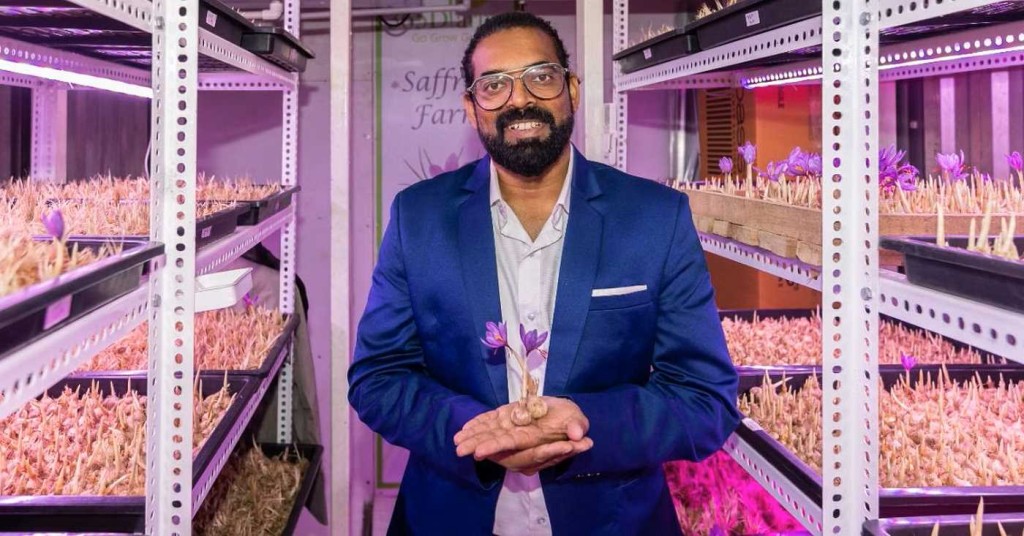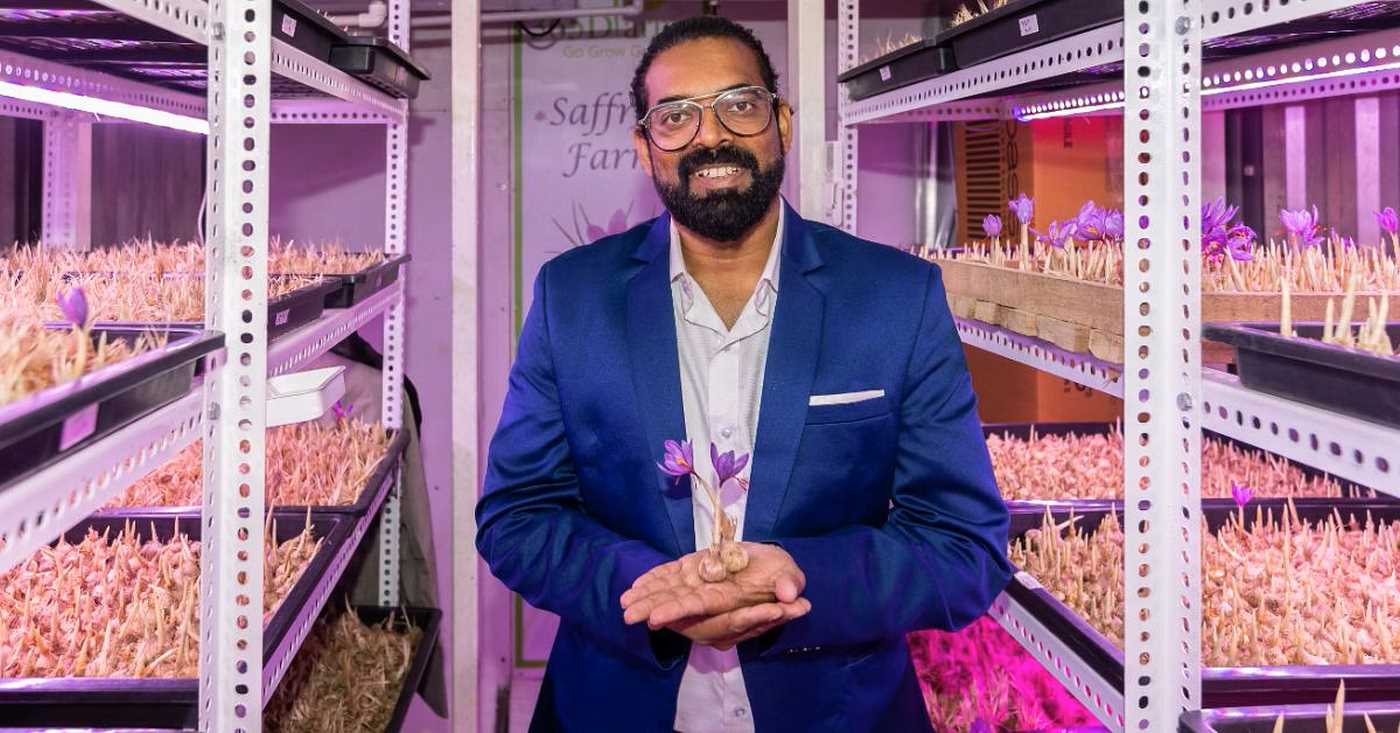
Feeling like the 9-5 office life of a software developer was too empty, an Indian man flipped his own script and became an entrepreneur, developed a method of hydroponically growing saffron, and wants to share it with the world.
Shailesh Modak didn’t have an easy road to the point where he would make around $12,000 for less than a kilogram of the world’s most expensive common spice, and like many entrepreneurs, he had to face a bit of disappointment first.
It started while driving on a highway from his native Kashmir to Pune when Modak heard on the radio about the worldwide plight of bees. He set up a business renting bee hives out to farmers for pollination purposes.
However, he eventually had to close the business down because he couldn’t keep on enough beekeepers, even though he was making a profit on several clients.
MORE AGRI-BUSINESS NEWS: New Bank in The Spirit of Walden Will Lend and Invest Only in Local New England Agriculture
He learned a lot about farming during this time, particularly about the crocus flower’s great bounty: saffron. In South Asia, Kashmiri and Chinese accounts date its arrival anywhere between 2,500 and 900 years ago. Persian accounts also date to 500 BCE, when the stamens of the Crocus sativus were harvested for dyes and sold to the Phoenicians.
“I was looking at cash crops and realized that 95% of saffron comes from Pampore in Kashmir,” Modak told The Better India. “While we have so much demand for the spice, we do not have the same amount of supply.”
His biggest problem was the bulbs that saffron farmers rely on to cultivate this strange, triploid, independently-reproducing plant that’s never found in the wild. They often reached him in poor condition.
MORE GLOBAL SOUTH NEWS: This Wonder Tree is a Game-Changer for Rainforest Agriculture in Honduras And Deforested Sites Worldwide
“I came up with the idea of using shipping containers to develop controlled environments, where crops can be grown. I went to Mumbai, bought a shipping container for [₹100,000], and had it shipped to Pune. The reason behind using a shipping container is that they are very good insulators,” said Modak.
He turned to using hydroponics, which cultivates plants in tubes of nutrient-containing mist and water rather than soil. The advantage, as Modak explains, is that when grown indoors the farmer can control the climate, amount of sunlight, and temperature, reducing the risk of damage and disease.
“The feeling of seeing those flower buds for the first time was incredible. I was so happy, as we were so unsure of whether the flower would bloom or not.”
He now receives near-daily calls from other agriculturalists and entrepreneurs hoping to learn about the techniques and specifics of growing saffron in containers via hydroponics, which if widely adopted could drastically lower its price.
SHARE This Entrepreneur’s Brilliant Journey With Your Friends…




















